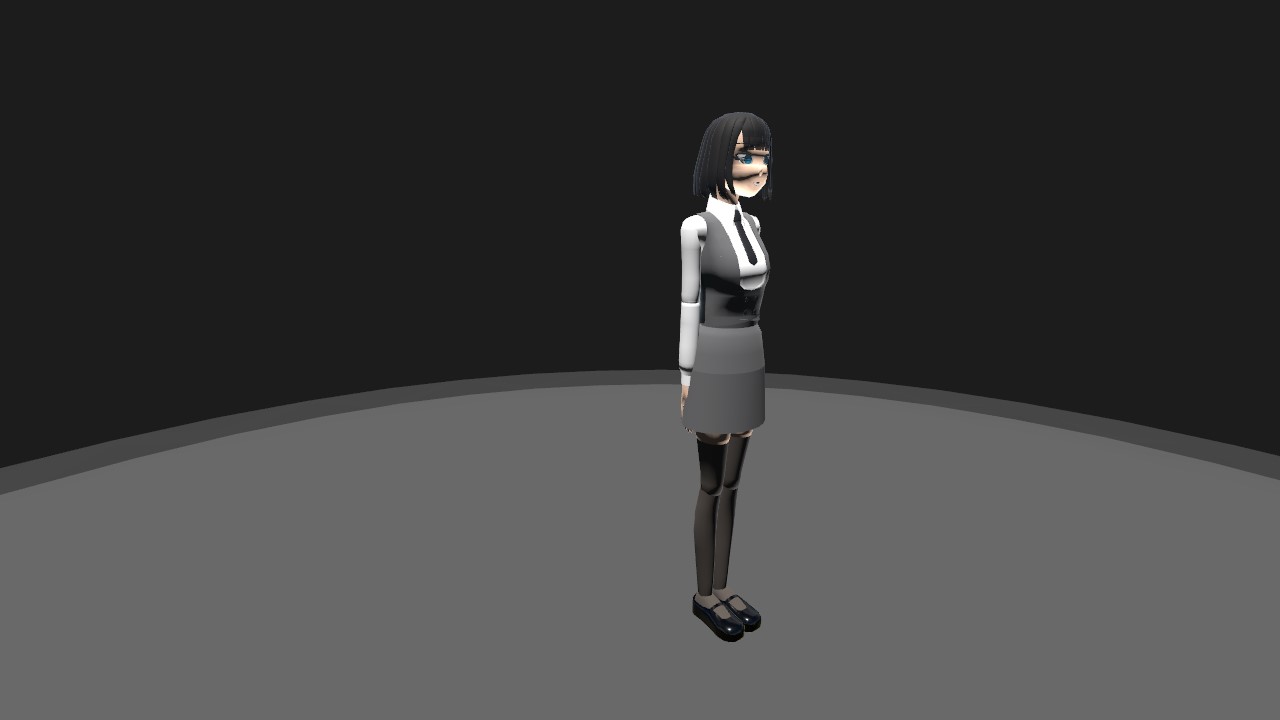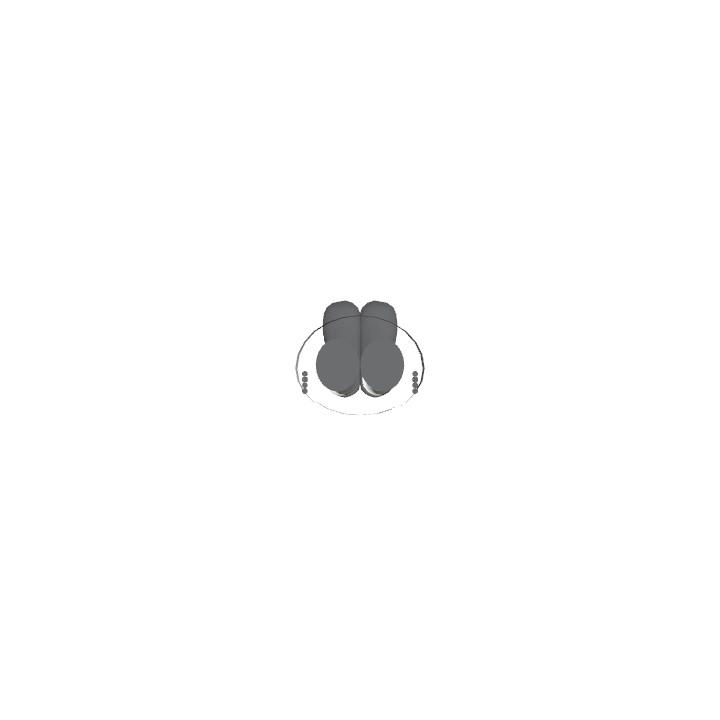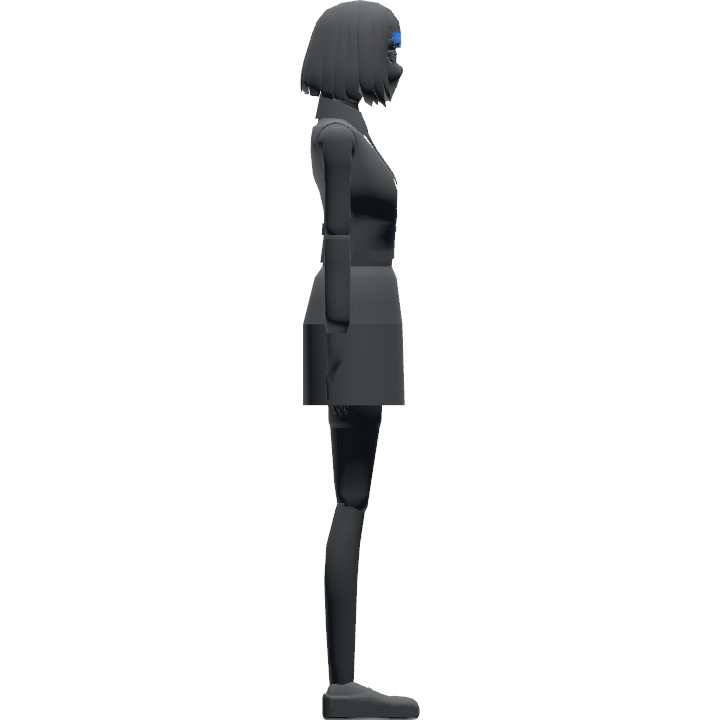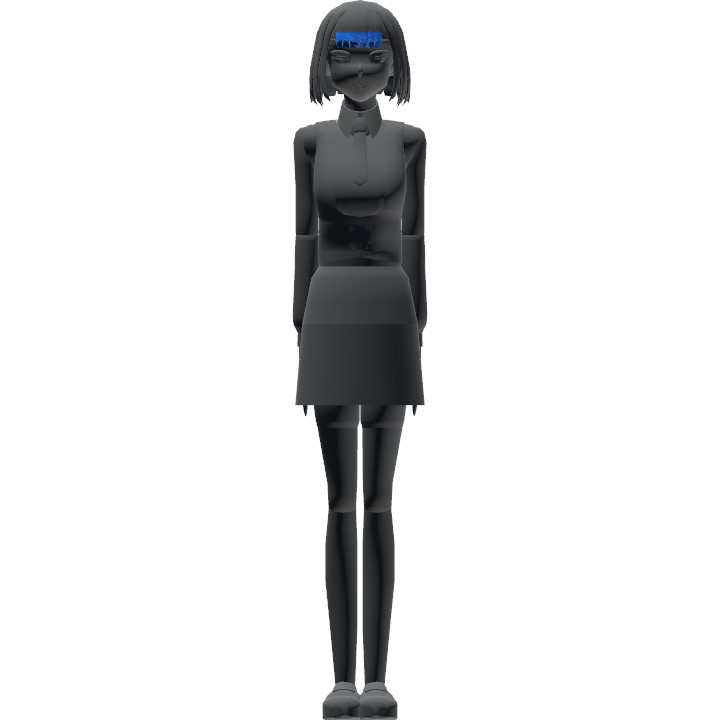remove collisions, change pid
BUILD NOT COMPLETE
HAMEKA WAVE-ARTS Observation Equipment -Naozumi-
Biomechanical droid (Partially Living System)
Rank: VI
USER MANUAL
CONTROLS
Click to view the reference table for poses and faces
MOVEMENT CONTROLS
AG8 - Enable Movement Inputs
- Pitch - Longitudinal movement
- Yaw - Yaw rotation (target heading selection)
- Roll - Lateral movement
- VTOL - Vertical movement
Gear UP - Turn off horizontal movement engines
FINGER CONTROLS
AG1 - Relax Modifier
AG2 - Fist Modifier
HEAD CONTROLS
AG3 - Enable Head Inputs
- Pitch - Head pitch
- Yaw - Head yaw
- Roll - Head roll (tilt)
- VTOL - Pupil deflection
POSE CONTROLS
Throttle - Face Selection
Trim - Pose Block Selection
AG4+VTOL - Pose adjustment
AG5 - Pose modifier A
AG6 - Pose modifier B
AG7 - Pose modifier C
CONTROL NOTES
- View the reference table for poses and faces here.
- Pose controls do not affect the head and fingers. Poses may require certain head and finger settings to appear correctly.
- Holding the movement inputs for long periods of time will increase the movement speed, helping with movement over long distances.
- I recommend using the SetWindSpeed dev console command for operation on ships.
DEV NOTES
This is a pose model with the appearance of my second original character, Naozumi. I started the project with the main goals of investigating the viability of using SP builds as art reference, and testing my existing art skill to build a model with as little reference as possible.
She didn't have a fixed outfit design yet, so I made a sketch and used it for the model. As usual, I don't completely know what I draw. I aimed for a mix between butler and student, I guess.
I used labels and fuselage blocks as guides to help with positioning parts of the body. I also refer to NASA sources (reliable) and my own body (unreliable) for construction, but it shows a lot of differences between people in the 2D and 3D realms. While I really like what I have managed to build, I'm not sure I trust past Natania-chan with anatomy.
Some clothing, like the vest and shoes, are built as an additional layer on top of the body, and are removable as a result.
To program a pose, I usually do the pose myself to see where parts go. Next, I write the numbers through trial and error. Temporary variables make the job easier.
I never thought this much about the characters. Setting the lore as human replicas is interesting, and there's a lot I have to write about strange things in the AFOS system, so I went with it. Rank VI technology in the timeline, but it's kind of cheated. Enjoy my writing I guess, I'll elaborate if I ever make another similar build.
I timed this project to encourage myself to build. Didn't work but I might do it again. This build project was open for __ days.
INFORMATION
Naozumi is the second machine utilizing Team WAVE-ARTS' prototype architecture.
Specifications (WAVE-ARTS Common Frame)
Size and weight varies due to operation, surrounding conditions, and any modifications.
Height: 1.54 m
Nominal weight: 65 kg
Operating system: AFOS 3+1
Production (WAVE-ARTS Common Frame)
Developer: HAMEKA Team WAVE-ARTS
Manufacturer: HAMEKA Biotech Division
Units Built: 2
Unit Cost: Unknown
History (Naozumi)
Started operation: 2103
Traits (Naozumi)
- Simple, naïve
- Very quiet and cold towards anyone she's not close with.
- Appears to like various engineering activities.
To show off its abilities in the field of biomechanical technology and biocomputing, HAMEKA started a program to design civilian androids as similar to humans as possible. Over 900 individuals were involved, including several development teams, manufacturers, and technology exchange workers. Each development team was encouraged to use common parts and technologies previously developed by HAMEKA, like an artificial living skin system, AFOS-compatible biocomputers, and related life support systems.
As part of this program, Team WAVE-ARTS was formed and constructed its own prototype android architecture. The machine has two main parts - the "core" which includes the biocomputer and life support, and the "control" section made of self-regenerating muscle structures over a composite skeleton. Through clever material selection, Team WAVE-ARTS was able to build a machine with a comparatively low mass, while maintaining adequate strength for regular human activities and even hand-to-hand combat. Elemental metals make up less than 1% of the android by mass.
Two neural network profiles were developed using AFOS 3+1, a variation of AFOS 3 created for research into lifelike android development. This system was able to produce personality traits to a greater depth and detail than its older military counterpart. After the training was complete, each profile was installed into an android. The two resulting machines were named Namie and Naozumi.
The Namie and Naozumi androids completed 6 years of accelerated simulator training, virtual living tests, and live tests combined. After their behavioral stability was confirmed, they were able to live together outside in the demilitarized metropolitan area where the research facility was located.
Specifications
General Characteristics
- Predecessor !nao_dev0_14_2_6
- Created On Windows
- Wingspan 1.0ft (0.3m)
- Length 0.8ft (0.3m)
- Height 5.1ft (1.6m)
- Empty Weight 1,236lbs (560kg)
- Loaded Weight 1,258lbs (571kg)
Performance
- Power/Weight Ratio 3213.419
- Wing Loading N/A
- Wing Area 0.0ft2 (0.0m2)
- Drag Points 64
Parts
- Number of Parts 905
- Control Surfaces 0
- Performance Cost 3,146




